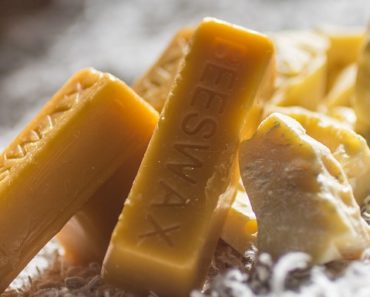The wood protection from the external factors and its “enemies” , is a very serious situation and i’ve spend many hours and time , to discover the best ways , to preserve wood .
You can protect your wood with natural materials , with chemical materials and the combination of these 2 , for better results .
I’ve written a post with all the protection ways , read it i HERE .
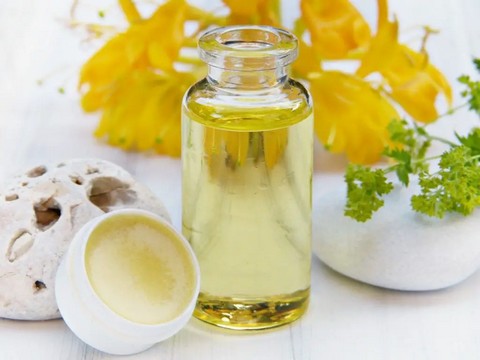
Before i begin i want to remind you , what a University Teacher of the Wood Science told me , once . He told me that , you may do all the correct actions to protect your wood , but this doesn’t guarantee you , the 100% success .
Luck is a serious parameter when you deal with “alive” – renewable materials , as wood is .
Best Oil List for wood :
1) Linseed Oil .
2) Tung Oil .
3) Teak Oil .
4) Danish Oil .
5) Decking Oil .
Of course there are many other oils as the Walnut Oil , the Cedar Oil , the Rapeseed Oil , the Olive Oil , the Sunflower Oil , the Sesame Oil , the Tar Oil( highly toxic) , the coconut oil , the Soybean Oil , the Corn Oil , Syntetic Oils from silica and i don’t know how many more .
The first five oils( linseed , teak , danish , decking , tung ) are the best for wood protection , because they are used for decades from millions , we have official researches for them , we have data from ther usage and huge ecperience for their results , during time .
What is our “goal” using all these Preservatives ?
Our major “target” when we use the so many natural and chemical materials for wood protection , is to fill the pores of wood and seal its mass , as more as we can .
In this way , we protect it from bugs – fungi , we hydrate it , we solidize it( “stronger” but flexible ) , protect it from discoloration and moisture and make it beautifull the same time .
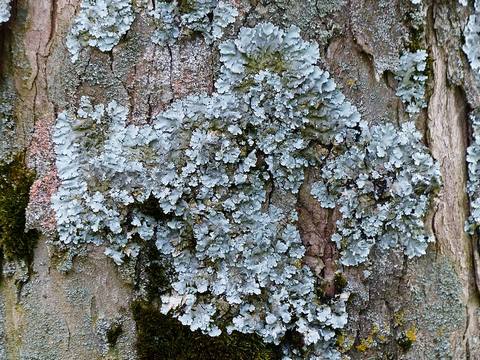
1) Linseed Oil or Flaxceed Oil .
It comes from the pressure of the flax seed and it’s very “popular” to the woodworking area and not only . You’ll find it in the painting area mixed with colors and other chems , as a basic material for stucco , as a general plasticizer , because it has the advantage of being solidized , while it’s drying .
This happens from the linolenic acids it has .
You also find it as an eatable oil .
You’ll see it as raw or boiled . The boiled(or maybe a little warmed up) has solvents and other chems inside it , for faster drying . In the woodworking activity we use it very much(both raw & boiled) , for protection and finishing and as part of the oil based dyes .
The raw has a light yellow color the boiled is more darker .
Some manufacturers who want better results , they drag out some oil’s proteins to make it stronger and long lasting .
What is better , Raw or Boiled for Woodworking ?
Their only difference is that the boiled has additives , for quicker drying time . The raw linseed oil dries very slowly and for many carpenters it never dries completely , but it continuous drying .
Anyway the drying of a wooden piece from raw linseed oil , can take from one or two months to more than 6 months(!) , depending of the place of the drying process . The additives of the boiled one , are reducing this time , to days .
In my opinion the raw linseed oil is the best material you can use for finishing your wooden projects and a little better from the boiled one . The linseed oil is the world champion of all the wood materials , concerning the texture , color , feeling , the beauty it gives to wood , as a result .
No material in the world , natural or chemical ( resins , polyurethane , et.c ) , can reach the texture , the emotion , the depth and emphasis of the wood’s “waters” and generic beautifulness , the raw linseed oil can give to your beloved woodworking creation .
Is Linseed Oil the Best Preservative , for woodworking plans protection?
No , it’s not . It gives the best beauty to wood , but it’s not the best preservative . According to the Forestry Agency in the US , the best two places in the protection “ranking” , belong to the resins and polyurethane .
Linseed oil cannot compete the modern chemical materials , but i’ll share with you ways , you can raise its protection capabilities , way more .
Is Linseed Oil Toxic ?
Yes it is and you should not confuse the woodworking linseed oil with the eatable – cuisine , one . The linseed oil which you can eat is only the oil which comes from the cold pressure extraction , with no solvents at all , in totally oxygen vacuum and sold with the appropriate food licences of course .
Is Boiled linseed oil good for Food and Kitchen’s equipment , use ?
No , it’s not and never use boiled linseed oil to protect your kitchen’s’s equipment . The reason is that the boiled linseed oils , isn’t 100% “virgin” and natural . It has additives inside for faster drying and these additives( solvents , et.c ) are toxic for humans and animals .
So never eat boiled linseed oil or woodworking linseed oil , but only the linseed oil which is for cuisine use and has all the necessary health licences .
Don’t even use boiled one , for your kitchen equipment conservation , cutting boards , wooden plates , et.c .
The oil willl penetrate the wood’s pores and and it’ll be mixed with your food , causing you serious health problems . There is another natural oil to use for your kitchen’s equipment protection , i’ll tell you in a while .
Is linseed oil good for wood’s Protection and Finishing ?
Linseed oil is the best material for wood’s finishing and it gives astonishing beauty to wood . No other material can beat it . It isn’t a shiny – glossy finishing as the crust varnishes , polyurethane (gives this “donut” shiny finish) and it’s kind of matt , but it’s the most beautifull .
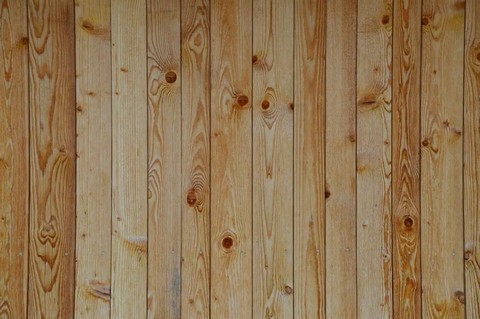
Of course this depends of your personal preferences , concerning how you want your wood to look , but the majority of people ( woodworkers or not ) , admits that the beauty and feeling of the linseed oil finishing , is unbeatable .
Benefits – Properties of linseed oil on wood’s finishing .
1) It’s not giving a crust result on the wood’s surface . The crust finishing in a short period of time , “breaks” and creates tiny unprotected cracks . From there , the moisture can enter wood and at the end your wood becomes totally unprotected .
2) The linseed oil , lets wood to “breath” .
3) The beauty it gives to wood , is “legendary” and the majorιty of the gun – rifle manufacturers( and more ) are using it as their last layer .
4) It goes very deep in the wood’s mass and many professionals are using a mixture of diluted varnish with linseed oil , to penetrate into wood , for more than 20mm!!!!
5) The linseed oil it darkens as it dries , becoming more beautiful . Many you won’t like it maybe , but it darkens it a little .
6) It can fill even the smallest pores of wood .The boiled dries faster .
7) It’s a great natural sealant and a great substrate for wood . Above it , you can apply whatever you like , oil based oils , crust varnishes , waxes , shellac , et.c .
The Beekeepers use it as a substract to their beehive and after that , they paint them with oil based dyes .
8) It’s a great wood’s hydration factor , for “tired” wooden surfaces .
Many oil based paints , during time they’re getting drier from time and sun and you may see something like a chalk dust above them . This happens because the oil they have , is “sucked” totally from wood , leaving the pigments alone .
If you make some layers with linseed oil on them , you’ll restore their “lost performance” .
9) Linseed oil is the most basic oil than the other 4 ones ( teak , danish , tung , decking ) and other oils(danish , decking for sure) , are containing most of the times linseed oil , inside them .
See my best oils – waxes – shellac buying suggestions for you in HERE .
How about the Protection to the wood ?
Even if linseed oil is the best finishing material , concerning the beauty of wood , it isn’t the best preservative for wood .
The oils and waxes are in the last “ranking” places according to the Us Forestry Agency and many professional carpenters .
The modern materials , chemicals and nanotechnology are way better for wood protection , from the weather conditions , moisture , bugs , et.c .
Technology is evoluting and even if the linseed oil is good for some kind of protection against bugs – fungi , water conditions , et.c , it isn’t the best . The resins , polyurethane and other stuff are better for the outdoor wood , the marine and salty conditions .
Linseed oil is capable with bugs and fungi factors , but the industrial bugcites and fungicites are way more capable wood termite – bug – fungi “killers” . The resins and polyurethane are kind of plastic and when they enter the wood’s mass , they protect it efficiently .
Bugs don’t eat plastic .
Is there something you can do to Raise the linseed’s oil protection ability ?
Yes , there is .
1) It’s called “continuous oil building” . You can make , many – thin – layers with linseed oil to the wooden surface you want , letting the oil dry completely before the next layer .
The many thin layers oil “building” , “balances” the linseed’s oil lower protection than other materials .
The thin oil layer makes the drying more easy . To do this , the best way to apply the linseed oil on your surface is by using your fingers , not some cloth , brush , et.c . You have better control of the oil quantity you use .
If you apply big oil layers on your wood , you don’t let the oil to dry well and you’ll observe oil dripping for many months , especially when the weather becomes hotter .
Thin layers , many times is the “secret” .
Always be carefull , not “allowing” the oil , to “lake” in the curves and difficult areas and be equal to all the surface .
2) Another thing you can do is to mix linseed oil and bees wax using the bain marie , method .
Above a pot with warm water , you warm the wax with the linseed oil , in order to become perfectly mixed . You need to be carefull not to cause a fire . You don’t need to have a strong fire .
The mixing ratio is : 10 parts of oil – 1 part of wax , but you can make adjustments .
After that you apply this to your wood , inside the pores you have oil and wax , which gives wood waterproof and protection abilities .
The wax also makes the oil to dry faster .
Is there any Danger while i use linseed oil ?
Yes there is . The wet cloths – sponges et.c with linseed oil can catch fire (!) with self-ignition . Before you storage them , you should let them outside to dry on air and then you can storage them with safety .
Another dangerous situation that you should avoid is not to do to your wood the shou sugi ban method , if you’ve used linseed oil on your wood .
The linseed oil is very sensitive to fire and you’ll may cause fire to your wood and not only . Be very careful to this .
Does linseed oil makes wood Stronger ?
Yes , it does . While the linseed oil dries , it becomes more solid , because of the linolenic acids ( the a-linolenic acid ) and other factors . It fills the wood ‘s pores and solidify it , a lot . It makes it stronger and flexible at the same time .
One of the reasons why the beekeepers use it as a substract in their beehive , is this .
Can you use linseed oil on wooden Boards and every wood ?

Yes , you certainly can and the results , concerning the finishing part will be astonishing , but you must not use linseed oil to your kitchen’s wooden boards .
Be very carefull to this . You cannot use the raw or boiled linseed oil to your kitchen wood boards and other kitchen wooden elements ( spoons , plates , et.c ) .
You should protect and preserve your kitchen’s equipment that comes into contact with food , only with appropriate oils for the job and not linseed oil or whatever other oil we use for woodworking finishing .
Don’t confuse the woodwokring oils and elements with the ones which are the correct for kitchen use , or other personal use .
This applies for all the carpentry oils , waxes , several materials et.c and it’s very serious for your health .
Except the kitchen’s wood equipment , you can use linseed oil on freshly cut , but well dried wood(you don’t want to “prison” moisture inside) , on planed wood , on “hard” types of wood , on “soft” types of wood , on every wood on earth .
I’ve have a post for the types of wood , read it in HERE .
You can use linseed oil on wood with “open” pores from rubbing , or more “closed” pores from sanding with your power sander , or whatever else .
You can use linseed oil on engineered wood( MDF , particle boards, et.c) , but i won’t suggest you do that .
Engineered wood is used mostly for practical reasons and we don’t care much for its looks . But if you like you can do it , it’s not “forbitten” by any “law” . In the woodworking we do “things” to gain soul happiness , except the other reasons .
Is linseed oil better than tung Oil ?
Yes , linseed oil is way better than tung oil concerning the beauty of its finishing , as it is of any other oil . Tung oil is more resistant , giving kind of a tougher layer on wooden surfaces . Remember to search and buy 100% pure tung oil and not a mixture .
Linseed oil and tung oil come from different trees-seeds ( chinese tung tree – flax seed ) , so they aren’t the same oils . If you find in the stores a 100% pure mixture of linseed oil and tung oil , take it .
It’s a great combination . You may see them with the name “varnish” maybe and if these 2 oils are 100% pure , the result will be great .
It’ll be a great mixture combining the marvelous linseed oil finish and the tougher surface – finish , of the tung oil .
Does linseed oil has a “Hard” drying ?
Yes , the raw linseed oil it has , that’s why the manufacturers created the “boiled” one . The “boiled” one has solvents and other factors inside , for faster drying .
That’s why , you should apply it with your fingers and make , very thin and many oil layers to your wooden surface . You “give the opportunity” to the air and sun to dry it , closer to the 100% is possible .
If you apply linseed with a brush , et.c and you soak your surface with linseed oil , you’ll need way more time for drying .
Two , three or maybe more than six months(!) and you’ll need to turn upside down your wood piece many times , in order the excess of oil to move inside , come to the surface and dry .
I only did that only one time , in some very “tired” and dry wood pieces and it took me three and a half months for drying , with dozens of upside downs turnings .
Can i Paint above the Linseed Oil ?
Yes , definetely . Linseed oil is a first class substract – sealer , in the woodworking area and not only . You can paint above it with any wood stain combination you want . Waxes , shellac , crust varnishes , impregnations varnishes , whatever you like and you judge that you want .
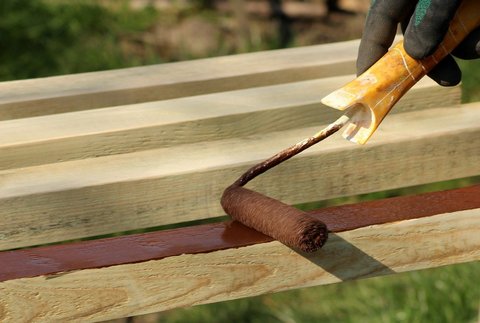
Be careful to this , as i mentioned it before . Don’t use the Shou Sugi Ban wood carbonize method above a linseed oil surface , because you may cause fire . Linseed oil is very sensitive to this .
2) Teak Oil .
It comes frοm the teak tree and the teak tree is very resistant to wood bugs – fungi – termites . The same is the teak oil .
The teak oil is a very nice and natural way( if it’s 100% pure) to protect your outdoor ( and not only ) wooden furniture . It’s very bug resistant and this is its huge advantage . That’s why teak oil is used so much from the manufacturers in their oil mixtures .
You can find pure teak oil .
Most of the times in the stores the teak oil canisters you see , include UV protection factors , other oils ( linseed oil , et.c ) , several kinds of “hard” and bees waxes and other factors .
All these “extras” , give better protection “shields” in the outdoor furniture and not only .
As i’ve said it before , no oil can reach the protection against the UV’s , weather conditions , moisture , et.c , the modern chemical products( resins , polyurethane ) can give .
So don’t be confused . Oils and waxes(and their combinations) are great natural protections ways , but cannot “beat” the chems .
Is Teak Oil better than Linseed Oil ?
Yes , in the area of bug – fungi , et.c protection . In the finishing area , linseed has no competitor . You can make combinations with other oils and waxes and create more capable wood natural protection and properties against wood wear .
You can make combinations with other chemical factors , varnishes , dyes , polyurethane paints , et.c and expand way more the wood conservation . Always make experiments , in small wood pieces , before you proceed to your main ones .
3) Tung Oil .
The tung oil comes form the tung Chinese tree and we take it by pressuring the tree nut . The drying process is making it more solid and in here it’s similar to the linseed oil .
We use it also for the wood pores penetration and protection and it’s a very nice solution . You can find it in its pure form , but many times ( not saying the majority ) you’ll find it , as a mixture of oils .
One best tung’s oil form is mixed together with the linseed oil ( in 50:50 ratio ) and boiled together , which is a very strong natural oil preservative in the woodworking activity .
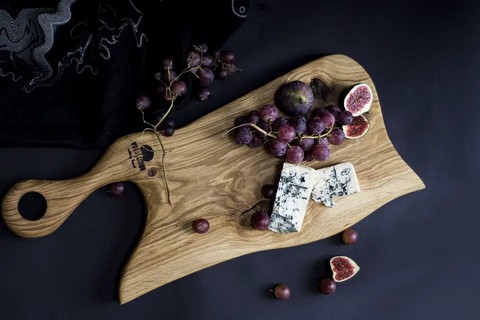
The best advantage of the tung oil , is that it’s the best to use for cuisine use and protection of your kitchen’s wooden equipment , of course in its 100% natural form .
It’s safe to use it on your wooden plates , spoons , et.c .
As i mentioned before we use only the correct and appropriate oil for kitchen and personal use and the tung oil is appropriate .
Of course , never use tung oil , if it contains solvents and other chemical factors . Only the raw is suitable .
Can i Use Tung Oil on my Kitchen’s wooden Cutting Boards ?
Yes , for sure you can and it’s the best solution , for all the wooden cutting boards , of all wood types . You can use it on you meat cutting boards , as on the vegetable ones .
Remember only to make thin oil layer when you apply it on the board’s surface , in order to dry well and always wipe out the excess , at the end of the process .
Can i Use tung oil on other Wood , except the Cuisine ones ?
Yes , you can definetely can use the tung oil in any wood piece you want . It gives nice finishing to the wood’s “waters” and makes a very nice grain . It gives the same properties ( hydrophobic , great substract , hydration , et.c . ) , as the other oil types give to wood .
Can I use Polyurethane , Dyes , Varnish , Over the tung Ooil ?
Yes , you can and tung oil is a very nice substract and preparation for a wooden surface . You can also use it as a sealer and solidizer of wood , because of the property it has , to become more solid while it dries . Only remember that if you use chems on it , it’s not usable for food and kitchen’s use anymore .
4) Danish Oil .
What is Danish Oil and what does to wood .
It isn’t a natural oil and it’s not originated from any nature’s tree or plant . It’s a mixture of oils most of the times and other chem factors , depending of the manufacturer . Most of the times it has linseed oil and tung oil in it .
The danish oil manufacturers are using a variety of oils , chems and other factors to give the danish oil , the exact properties they want , for wood protection .
As you can understand these several kind of protection factors inside the danish oil , protect the woodworking projects , from many different types of problems .
Can i use danish oil on all Types of Wood ?
Yes , you can definetely can and you’ll have a great protection , because of this manufacturers variety of ingredients , usage .
Only you should read the instructions and the label of the canister , before you make a purchase , to be certain that the danish oil type is suitable for what you want to do .
Can i use danish oil to my kitchen’s cutting Boards ?
No , you cannot use danish oil to your kitchen’s equipment , but only the appropriate ones . The tung oil is suitable for the kitchen materials . Use only the pure tung oil for this .
Can I Wax above the danish oil ?
Yes , you certainly can as you can with all the woodworking finishing – protecting oils . Oils are a great substract and wood’s sealant .
Can I use danish Oil Above a Painted color on a wooden surface ?

Yes , you definetely can . The danish oil , will penetrate the color’s pores , “moisturizing” your wood . During time the wood “sucks” the oils from the paints and that’s why you maybe see a chalk dust on your wooden surfaces and the color being , kind of “pale” .
Hydrate your surface with danish oil , linseed oil or whatever you like and your color will be “fresh” again .
5) Decking Oil .

This oil comes from the mixture of many factors – ingredients and it’s not a natural 100% oil . As you may understand from its name the decking oil is mostly “targeted” to the marine and boats usage .
It may contain whatever the manufacturer desides that it’s the most usable for the type of a specific protection . It may contain all the kinds of oils , waxes , paints , varnishes , resins , polyurethane dyes , “hard” waxes , carnauba) , et.c .
The decking oil varieties are the most capable for wood protection in the outdoors and especially for the sea activities . Of course you can use it , for your outdoor wooden stuff , with no problem .
What Waxes , should i Use for my woodworking Protection & Finishing ?

Waxes are materials , coming from organic ingredients . Even the synthetic ones , have some natural wax in their mass . We have vegetable , animal , synthetic and coming from petroleum waxes .
The most common is the bees wax , but we have also soy wax , wax from quicklime( it’s white) , carnauba wax( Brazilian wax) .
The best wax to use in your woodworking projects , is the 100% natural bees wax , which you can combine with oils ( bain marie method) and create a very resistant wood surface .
The carnauba wax ( you may have heard it as a “hard” wax) comes from a palm tree , is more “hard” than the bees wax and usually you’ll find it , mixed with bees wax for more “comfortable” use . Decking oils have carnauba waxes inside them .
If you like a white quicklime type , wood finishing you can use the quicklime wax .
ATTENTION :
1) I suggest you not to use chemical – synthetic waxes for indoor wood . We don’t want chemicals on our skin , on our plates , on our air , et.c . Use only 100% natural waxes and the bees wax is the best in my opinion .
2) The bees waxes with resins may cause allergies , read the labels before you buy .
3) Avoid the bees wax with turpentine , is toxic . Read the labels and avoid it .
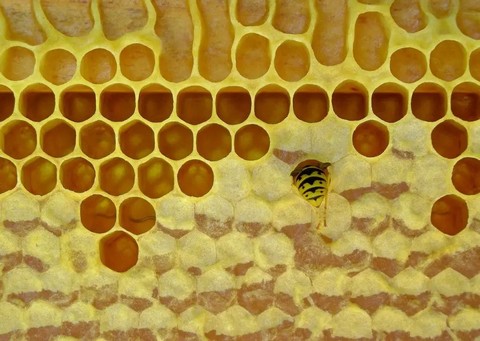
Final Woodworking Suggestions , using Oils and Waxes .
1) For your Indoor wood of any type and Kind , use only 100% natural oils and waxes . Make combinations with them . Always try in a small wood area before the main one and don’t forget to rub your wood between your continuous applying layers .

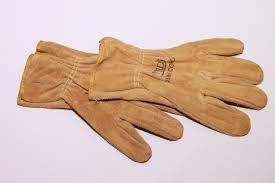
2) For your Outdoor wood , you are more “free” to use oils and waxes having some chemical factors , varnishes , solvents , resins , polyurethane , et.c , inside them . Always take the appropriate safety measures to protect your skin , respiratory system , et.c and make as many combinations you like .
Keep woodworking and gain the maximum of happiness , from it .
